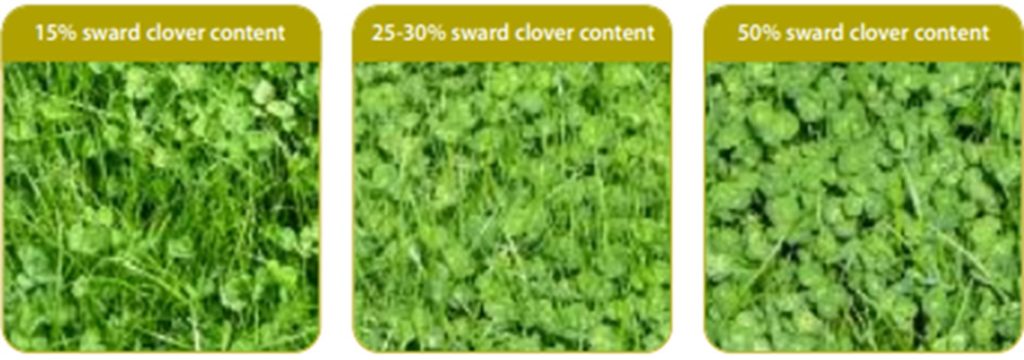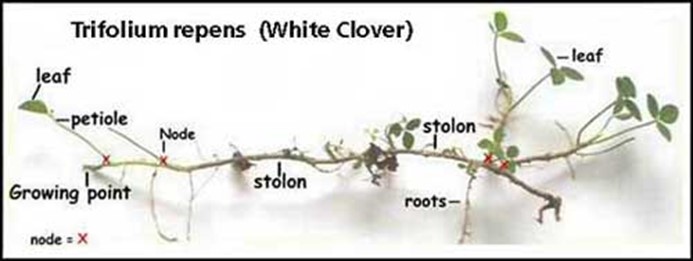Milk Manager News July 2022 – White Clover/Grass Balance Management
1 July 2022The benefits of having a high clover content in your swards are well documented. However, ensuring you keep the clover in your sward and get the best out of it requires careful management. The optimum clover/grass balance is clover contributing 30 – 35% to total sward dry matter. This balance can be difficult to maintain, with clover or grass becoming dominant.
Visual guide to assessing the clover content of your pasture
Source: Aber Clover Management Guide
Clover Domination
If clover becomes dominant, then it can outcompete the grass, leading to greater weed ingression and to the clover being vulnerable to winter damage. The greatest risk period for clover domination is the second and third year of a ley. Actions that can be taken to avoid and correct clover dominance includes:
- Utilise smaller leaved clover varieties – these are less likely to overcome grass in the sward.
- Regular silage cutting and the associated regular removal of nitrogen will favour clover, particularly in organic systems. Proper crop nutrition will ensure that the grass has the nutrients it requires and can compete with the clover.
- The application of nitrogen will favour grass, allowing it to compete better with clover.
- Intensive grazing by sheep will suppress the clover.
Grass Domination
Grass domination is the opposite from the above and occurs where grass outcompetes the clover in the sward. This results in the sward losing some of its clover content and losing the resulting nitrogen fixation and nutritional benefits it provides. Actions that can be taken to avoid and correct grass dominance include:
- Avoid over application of nitrogen – nitrogen application favours grass and can result in the grass shadowing out the clover resulting in the clover not being able to access sunlight needed to photosynthesise.
- Avoid regular silage cutting – when a silage crop is being grown, grass begins to overshadow clover again limiting its access to sunlight. Reducing the frequency in which a field is used to produce silage will enable the clover in the sward to persist.
- Poor grazing management can also lead to the clover being selected by grazing animals due to its increased palatability. Increasing the stocking rate while reducing the grazing period through rotational grazing is a good solution to ensure that animals are less able to select the more palatable species within a sward.
White clover plant structure
- Stolons are a good indicator of the clover health in the sward. Observe size and vigour of stolons throughout the grazing season and adjust management practices as required, so if the stolons show signs of stress and are decreasing in size and vigour, grazing frequency could be decreased to allow them to recover.
- Avoid over grazing in winter – keep grass at 4 – 6 cm over winter to protect stolons from frost damage.
- Avoid excessive stolon damage through poaching.
In addition to the measures above, growing specific grass/clover swards for either grazing or silage can be another useful solution to both clover and grass domination, as both swards are only used for their specific purpose and therefore the risk of domination is decreased.
james.orr@sac.co.uk; 01292 525010
Sign up to the FAS newsletter
Receive updates on news, events and publications from Scotland’s Farm Advisory Service



